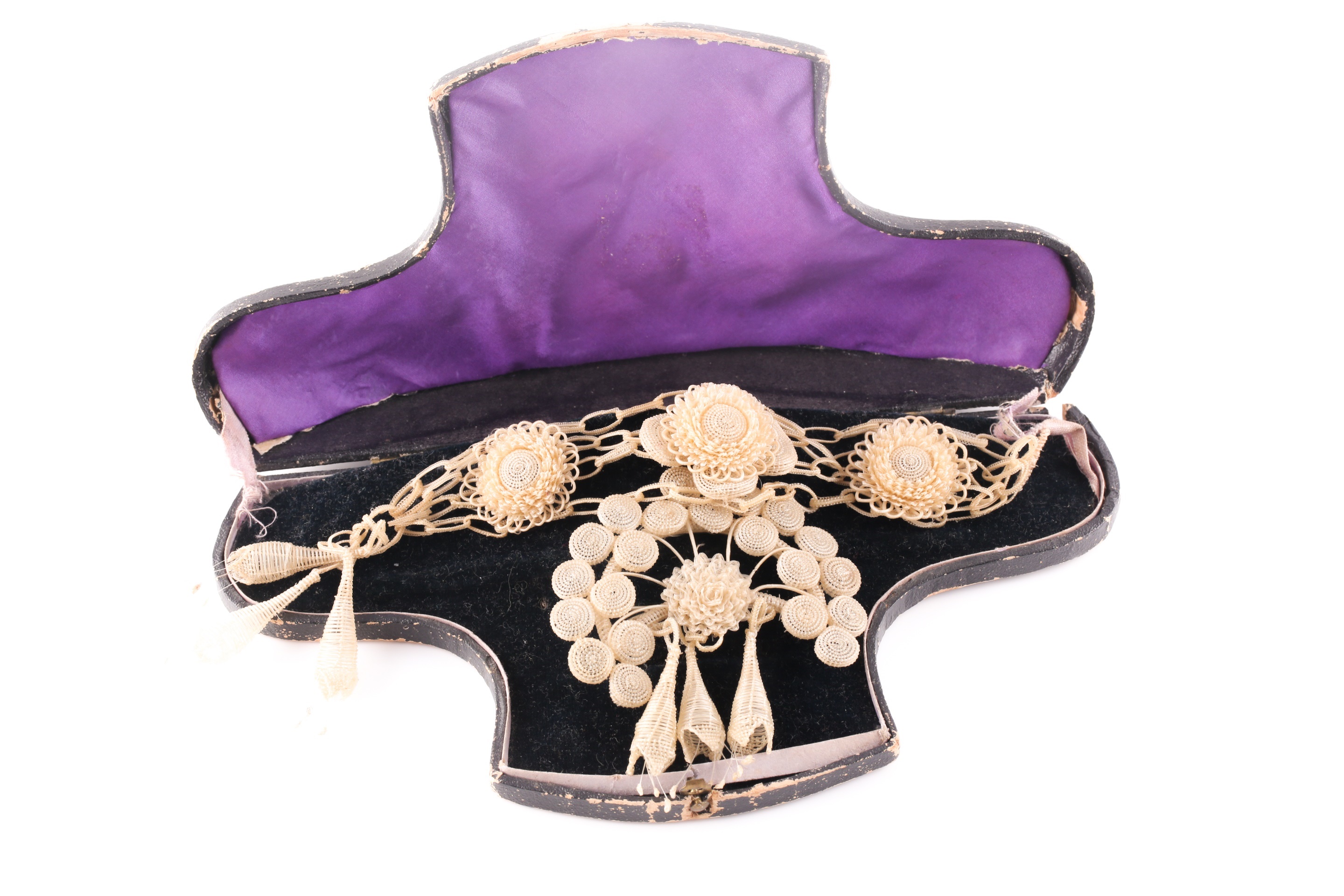Why is Georgian Jewellery So Popular?
How to accurately date a Georgian piece and why they are worth the investment.
When looking at Georgian jewellery, there are a number of areas we examine regarding the different pieces
27/09/2021
During the Georgian era, there were many developments in technology and fashion; this then significantly impacted jewellery trends. The history of Georgian jewellery can span back from 1714 to 1830, embracing the reign of George I, George II, George III, and George IV. Although the name of the period references England, this nation wasn’t the single influence in jewellery design. Historical events in France, Germany, and Italy also influenced Georgian jewellery themes and designs.

A Georgian style diamond ring
Sold for £5,700
During this period, a variety of metal alloys were used in creating jewellery, silver being a popular option. However, the more highly priced pieces were made of gold; rose gold became more widely used later in the 19thcentury, after the growth of its popularity in Russia, where Carl Faberge often used it in his designs. Other metals were used during the Georgian period including iron and steel; a popular alloy of copper and zinc was ‘pinchbeck’ which was a type of brass that does not tarnish. It was invented by an 18th century London clockmaker called Christopher Pinchbeck, and original pieces are scarce and highly collectable. Despite the vast availability of resources such as diamonds and other gemstones that were discovered in Brazil during this era, many Georgian jewellers often would recycle old metal, melting down the jewellery that had fallen out of fashion. They would then use this material to create new fashionable pieces, which of course still happens today. In the early 19th century, methods of gold plating were coming into play, although patents for heavy gold plating were not passed until the 1830s.

A late Georgian yellow gold fancy link bracelet
Sold for £1,300
The majority of Georgian jewellery you will come across today is from the late part of the Georgian period. Typically from the 1800s, very few earlier pieces have survived. When looking at Georgian jewellery, there are a number of areas we examine regarding the different pieces. Georgian rings will have tool marks due to being hand carved. The casting technique was not yet used, so a handmade ring of this period will have been made with excellent precision and care. The quality of the craftsmanship can be a reliable indicator of its age. The stones will also not be perfectly symmetrical due to being cut by hand. Assaying had not yet been introduced, so hallmarks and makers marks will be noticeably absent.

A Georgian yellow gold mourning ring
Sold for £320
On a Georgian brooch, the pin will give away a lot of tell-tail signs of its age. The simple C clasp was the oldest form used and had no locking mechanism. If the pin extends far beyond the brooch's length, it is likely to be a Victorian item as the Victorians extended their pins for extra security. The simple C clasp was used right up to the 20th century. The hinge of the pin can also help to date the item; earlier pins used a tube hinge until the invention of the ball hinge in 1898.
When dating Georgian earrings, it is important to look at the findings. Georgian earrings often used fish-hook style wires or shepherd crooks as they are sometimes called with kidney wires and screw back earrings not being invented until the Victorian era. The next thing to look at is how the fish-hook wire is attached. In the Georgian period, the wires would have been soldered in place or attached through eye hooks. It is here you will also notice if the item was repaired at one time; this is quite common with antique jewellery; resizing, soldering marks, and even re-shanking or re-setting are commonplace, but all of these can affect the value of an item.
In the example of a necklace or bracelet, the clasp is the most reliable place to find any dating clues. The oldest form of a clasp, introduced in the 1700s, was the push-in box clasp. It worked by using a thin V-shaped piece of metal that would slot into the receiving box-shaped clasp. The box clasp, also called the tongue and groove catch was used until the spring ring clasp in 1900.

An unusual late Georgian catgut bracelet
Sold for £200
Why is Georgian jewellery Worth More than Modern Counterparts?
It’s all about retaining value. Much the same as when you buy a new car, you are paying a premium when you part with the retail price for contemporary and modern jewellery. The value of that purchase will then drop as soon as it leaves the store in your hand because it is no longer new. With Georgian jewellery, the piece has already gone from ‘new’ to ‘old’ before buying it, and as these pieces are rarer and rarer, their value will only increase in the future. It is important to keep them in good condition, and to make sure that when repairs or replacements are done, that they are handled sensitively by an experienced jeweller.
Are you considering selling Georgian jewellery?
Dawsons can access a global audience of more than 10 million known bidders, and secure the best price when you sell jewellery.
Contact an expert Jewellery Valuer today for confidential sales advice, we would be delighted to help: